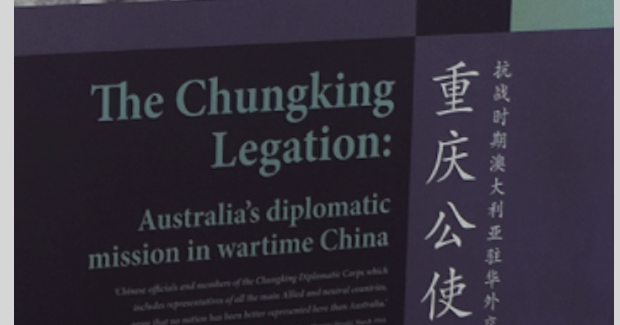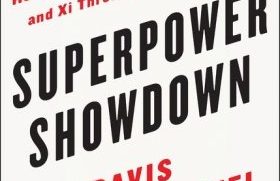Reading Room: The Chungking Legation

Australia’s diplomatic engagement with China didn’t start with Gough Whitlam. It is worth remembering those early diplomats who served faithfully in Chungking during the contested times of World War II.
In May 1941 Canberra announced its decision to establish an Australian legation in nationalist-held Chungking. China was an important ally in the war against Japan. If that was not enough, China was convulsed within, as the nationalists and the communists fought to gain control of their country amid a wider war. Despite that wartime fraternity, Mao Tse-Tung led his armies to defeat Chiang Kai-Shek.
By October 1941, Minister F.W. Eggleston had presented his credentials and the Legation opened for business. In the period from 1941 to 1951, responding to events in the wars, Australia’s diplomatic representation in China was staged through Chungking, Shanghai and Nanking. An Australian Consulate-General in Shanghai was established in July, 1947 and it was the last post to close in September, 1951. When the communists captured Nanking in April 1949, Australia had to confront the political reality of the Chinese Revolution. In October, Mao declared the creation of the People’s Republic of China and the same month, Australia’s Embassy in Nanking closed with staff evacuated to Hong Kong. The office in Shanghai limped on for another two years until September 1951 when it too closed. Australia retreated from China and relations were not to be restored until 1972 when Labor returned to power and Gough Whitlam restored normalcy to a long-neglected diplomatic relationship in Asia.
No history is complete without footnoting those intrepid Australians who made it. Indeed, they were all pioneers, for the most part on their first posting in the ultimate hardship post. The list is incomplete but we might include the following: David and Marion Beattie, Douglas Copland, Barry Hall, Maris King, Charles Lee, Keith Officer, Patrick Shaw, Keith Waller and a host of Chinese local staff who loyally served the diplomats who were posted to China in the interregnum.
Charles Lee (1913-1996) should be privileged among those who served in China. He was the first Chinese-Australian diplomat and he served in-country for a record period, from 1941-1949. As a third secretary, his role was indispensible. He soon acquired the necessary Mandarin skills and established useful connections to progress the mission’s work. He also suffered the privations of having to survive in a war-torn society when basic supplies were short at hand. His widow, Nancy Gilan Lee (1925-2016), survived him for 20 years, only dying last May. The daughter of a distinguished Chinese surgeon, she is still fondly remembered by a generation of Australians to whom she taught Mandarin in the heady days after official recognition.
Australia had recognised the nationalist government in Taiwan but that relationship was suddenly truncated when Canberra decided to re-recognise China on 21 December, 1972. Australia returned to mainland China when it opened an embassy under Ambassador Stephen FitzGerald AO FAIIA in 1973. It was a wise choice as he was an accomplished sinologist who had served in Hong Kong and gained a formidable command of Mandarin.
This finely published book is a welcome addition to Australia-China studies. Produced in a coffee table format, its sum is greater than its parts; it is a good read at several levels, including histories at once official and personal. The vignettes evince that Australia was well served by a hardy team of tyro diplomats who did their best in the worst of times. The book has a worthy promotional objective; any publication designed to mark and sustain the history of Australia’s diplomatic relations with China services a higher realm – for both countries. Chinese representation in Australia is another story deserving of its own book. Moreover, it is inclusive in reaching out to two audiences. This is why, in a remarkable master-stroke, the text is in both English and Mandarin, ensuring that it is a book to be read and understood for the important message it carries. A copy should be held in every Australian library.
Kate Bagnall, with the inspired assistance of several entities, including the Chinese Museum of Victoria and the Department of Foreign Affairs and Trade as well as Chinese institutions, has authored a seminal work which invites study and reflection. It is a work which celebrates a long friendship which continues to sustain many.
Kate Bagnall, The Chungking Legation: Australia’s diplomatic mission in wartime China. Melbourne: Victoria Museum of Chinese Australian History, 2015. ISBN 9780958778558.
An exhibition on the Chungking Legation is showing at the Chinese Museum in Melbourne until 10 November 2016.
Mike Fogarty is a former RAN officer and Australian diplomat.





